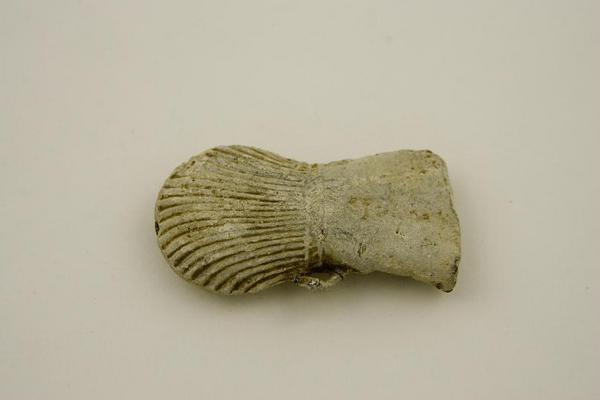ampulla
Accession Number NWHCM : 1997.575
Description
Ampulla, lead ampulla
Read Moreampulla
Ampullae were small vessels used to contain water or oil, collected from holy shrines and wells in the medieval period. They were believed to carry the tangible spiritual benefits associated with such sites to the benefit of their owner. Among the numerous ampullae that survive, many are associated with Walsingham in north Norfolk.
First awareness of Walsingham as a Christian shrine derives from a late medieval tradition in a Book of Hours, published about 1496, relating how a chapel dedicated to the Virgin was built there in imitation of the Santa Casa in Nazareth, in 1061 by Richeldis de Fervaques. The actual date may have been later, as such a Norman-sounding person as is unlikely to have been present there before the Conquest.
Monarchs including Henry III, Edward I and Edward II all visited the shrine. Many visitors wanted a keepsake of their pilgrimage. Ampullae provided an admirable souvenir, decorated with emblems of the shrine and enclosing sanctified traces in the form of water or oil.
First produced at Canterbury in the late 12th century they then suffered a dip in popularity as pilgrim badges became preferred. There was a revival in the late 14th century, with more standardised designs.
This example is made of lead for cheap mass-production in two-part moulds. The shell design on one side, originally the emblem of the shrine to St James at Santiago de Compostela in Spain, had by now become a more generic motif of pilgrimage. The use of a crown above a W, representing the Virgin Mary, and the initial letter of Walsingham. By the late medieval period, Walsingham was one of the largest pilgrimage centres in England with a reputation that made Norfolk a prime destination for the devout.









